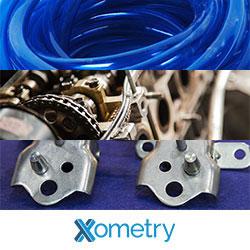Why Choose 3D printed molds?
EBI provides rapid prototyping service, 3D Printing, plastic injection molding, CNC Machining, low-volume, on-demand. no MOQ, fast delivery free design. RFQ please contact: Tel: 0086-791-86372550 Fax: 0086-791-88382737 E-mail:info@ebi-part.com Alibaba store:https://lnkd.in/ekWR_AX
3D printing is most commonly used for prototyping and direct production of workpieces, but can also be used to make 3D printed molds used in the traditional production.
Why use 3D technology to produce molds?
The first question is why to choose a 3D printing production mold instead of directly printing the workpiece or machining the mold. This depends on the specific requirements of the production, especially the number of workpieces to be produced.
3D PRINTED MOLDED
Prototype manufacturing vs small batch production vs mass production
There is no doubt that high-volume production is best done with CNC-machined metal molds. 3D printed molds are not rugged enough, and even with the toughest materials to print molds, they can only withstand up to 100 injections. In contrast, CNC-machined metal molds can be used to produce tens of thousands of workpieces.
Conversely, If you want a prototype, then additive manufacturing is undoubtedly the best choice. When the number of workpieces to be produced is large, but less than 100 pieces, the use of 3D printing injection molds is the most cost-effective method, but it depends on the specific situation. Sometimes when the workpiece requires a specific material, but 3D printing is difficult to complete, then only the CNC-machined mold can be used for small batch production.
CNC Machined MOLDED
Value for money
The main advantage of 3D printing models is the low cost compared to models made CNC Machining. Although it is difficult to determine the specific price, the cost of processing metal molds using CNC Machining is usually several thousand dollars, and the cost of CNC production of high-end molds is even as high as five figures. The material cost of using 3D printed molds is very low, usually less than $100. If you consider labor costs and other factors, this cost will increase, but 3D printed molds will definitely be much cheaper than CNC-machined metal molds.
Fast and flexible
3D printed molds are more efficient and have shorter production cycles. When the number of workpieces is less than 100, it takes about 2 days to make the 3D printing injection molding model, and the conventional injection molding model takes more than a week.
The flexibility of the D printed molds is also higher. Designs are often modified or regularly updated. If you use a traditional injection molding model, the cost of making a new model can be prohibitively high, but if you use a new 3D printed molds, you only need to quickly adjust the updated 3D drawing for printing. The new model will be available the next day.
Poor durability
The main disadvantage of 3D printed models is their poor durability. Injection molding usually requires high temperatures, far beyond the temperature range that most SLA resins can withstand. High-temperature resin materials are required when printing models for injection molding, but the temperature is still a major weakness.
3D printed materials are not as hard as aluminum and steel. Every time a workpiece is ejected, a strain is generated on the mold. Even the most sturdy 3D printing mold cannot be used to eject the mold thousands of times like a conventional mold.
3D PRINTED MOLDED
Post-processing
It is worth mentioning that the 3D printing mold needs to be polished after the printing is completed. Even if the printed layer thickness is small, the mold will still have a certain degree of grade and roughness, so it needs to be polished to ensure that the final mold will not be level and rough. In order to reduce the grinding as much as possible, when printing the mold to ensure that the support structure is on the back of the mold, without affecting its front.
3D printing injection molding is a good choice when the situation is right. Especially in the case of only a small amount of prototype manufacturing, or small batch production, 3D printing injection molding is a perfect choice. It is also well suited for situations where the design may be modified multiple times, such as products that evolve over multiple iterations. When the conditions are right, this form of manufacture may be 10 times cheaper than traditional methods, not to mention its high efficiency.
Featured Product

Get RFQs on Die Casting, Stamping, and Extrusion With Xometry, Your Source for Custom Parts
Xometry is your source for custom parts. Now, in addition to getting instant quotes on 3D Printing, CNC Machining, Sheet Metal, and Injection Molding, customers can create and send RFQs for die casting, stamping, and extrusion work to our nationwide network of pre-vetted manufacturers with just a 2D drawing. You will receive and be able to review responses from qualified shops within 7 days on an advanced web-based RFQ management platform. To learn more go directly to our site to issue and RFQ today. Stop wasting time managing RFQs through email and by phone, and start issuing RFQs at scale and in the cloud.
